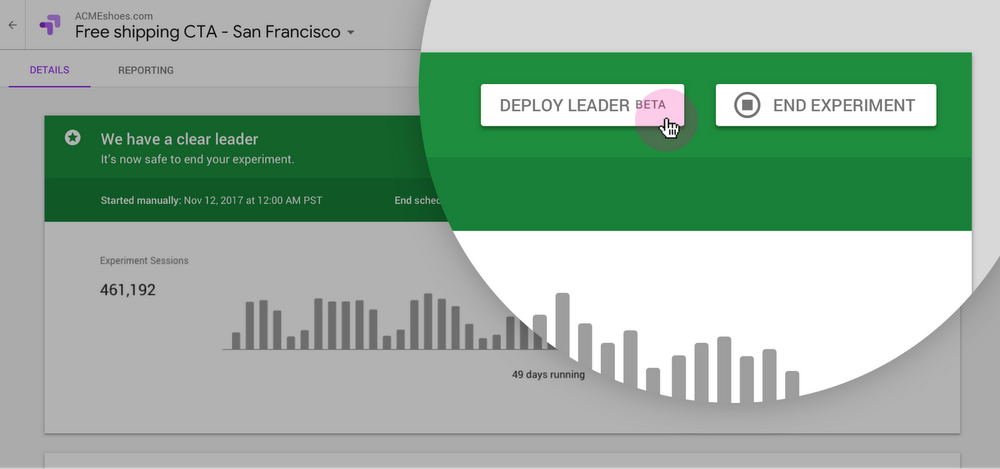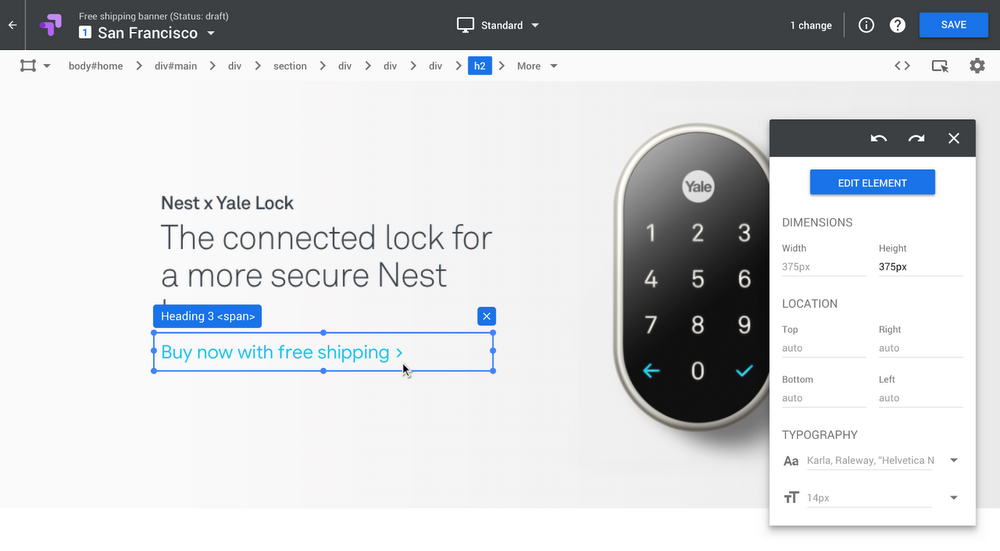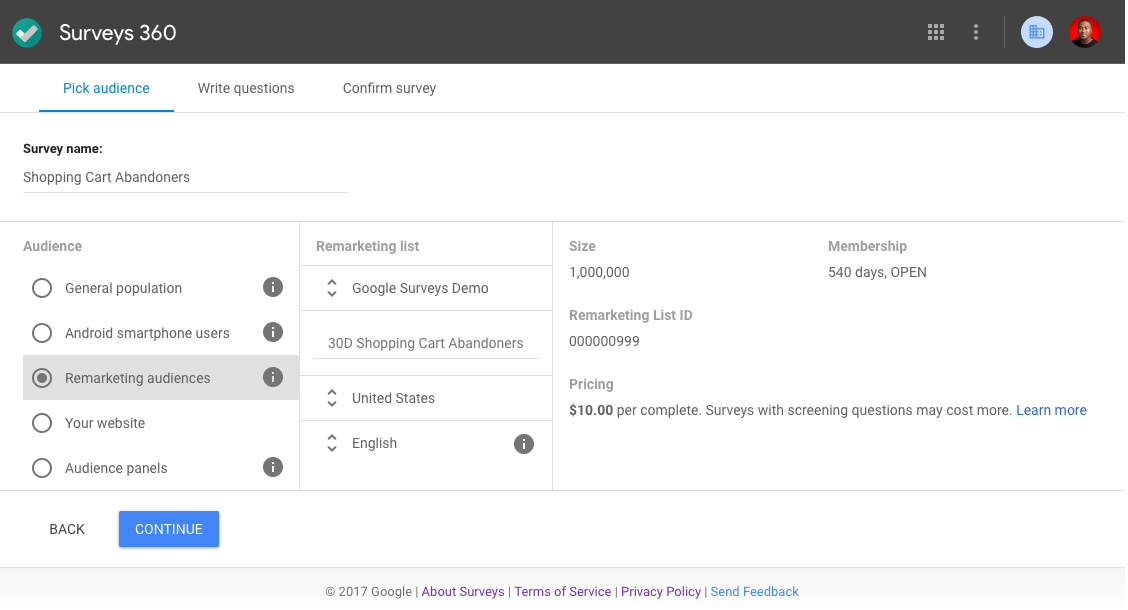People want compelling and relevant digital content that's delivered at just the right moment. That's why Google Optimize is making changes to help businesses deliver better, more personalized experiences to your customers. Now, in addition to running short-term website experiments with Optimize, you can create custom website experiences that deliver the right message to your customers—every time they visit your site.
Put your experiment results to work
Optimize has always helped you test which version of your site works best for your customers. Now it’s even easier for you to immediately launch the winning version of your site with just a few clicks.

Once your experiment has ended, you can set the winning version live on your site.
Launch personalized changes from the ground up
You can also create personalized experiences without running a test first. For instance, you might want to offer a special like free shipping to all customers in San Francisco.
Launching a personalization from scratch is now simple in Optimize. First, click the “Create Experience” button and select “Personalization” as the experience type. Using the Optimize Visual Editor, you can add the free shipping offer to your site. Then, select “users located in San Francisco” and launch the personalization. It’s that simple.

Use the Optimize Visual Editor to make a change on your site and then make it available to any segment of your users.

Rituals Cosmetics, one of the leading bath and body brands in Europe, has been an early tester of the new personalization features. Now Rituals Cosmetics is able to deliver more than 50 different custom product promotions on their site at once.
“With personalization features in Optimize, we’ve been able to quickly build personalized site experiences at scale. And with the analysis capabilities in Optimize, we’re able to easily measure the impact these experiences are having on our business.”
- Martijn van der Zee, Digital Director, Rituals Cosmetics
These new personalization features are now available to all Optimize users, with more personalizing features on the way.










